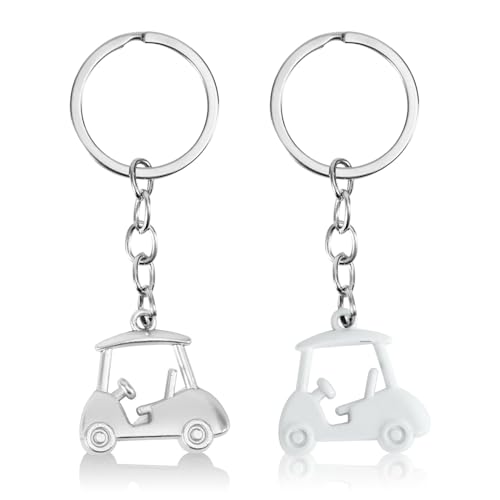Ever found yourself scratching your head after watching your golf ball veer dramatically off course? You’re not alone. That frustrating curve to the right for right-handed players (or left for lefties) is known as a slice, and it’s a common issue that plagues many golfers, from weekend warriors to seasoned pros.

Understanding why your golf ball slices could be the key to improving your game. It’s not just about the swing; it’s a mix of factors that can send your ball on an unwanted scenic route. Let’s dive into what causes that pesky slice and how you can start hitting the fairway with confidence.
What is a golf ball slice?
You’ve probably been there: you stride up to the tee, take your stance, and eye that fairway with resolve. Then, with a swing that feels solid, you watch your ball take an unexpected detour, curving sharply to the right. That’s the dreaded slice, and it’s enough to make even the most composed golfer’s confidence waver.
So, what exactly is a golf ball slice? It’s a ball flight path characterized by a significant left to right movement for right-handed players, or the opposite for those who play left-handed. A slice occurs when the ball spins excessively in a clockwise direction (for right-handers) leading to a substantial, and often unwanted, curve to the side as it moves forward.
Understanding the slice begins with a look at the points of impact. If the clubface is open relative to the path on which it travels, it imparts a spin on the ball that encourages this sideways dance. Picture the face of a clock: If your clubface strikes the ball angled toward 1 o’clock, it will send it spinning to the right.
The mechanics of your grip and swing are usually the culprits here. But it’s not just about the grip. The stance and swing path—inside out or outside in—play a role in creating that slice. Focusing on keeping an even tempo and a balanced stance can limit the misdirection. Let’s look closer at each of these areas:
- Grip: Too weak (more towards the bottom of the club) can cause the club to open.
- Stance: Not squaring up to the ball can lead to an improper swing path.
- Swing Path: An outside in path is more likely to produce a slice.
Correcting a slice demands patience and practice. It’s about finding that sweet spot where your clubface meets the ball squarely, sending it high and straight down the fairway. As you dissect and understand your own swing, you’ll gradually bend that slice closer to the straight shot that reliably finds the fairway. Remember, the goal here is to keep the ball spinning on a vertical axis rather than a horizontal one.
Keep tinkering with your grip, stance, and swing path because each adjustment is a step towards taming the slice. And with each step, you’ll watch your score start to drop as your golf ball slices less and less.
The physics behind a golf ball slice
You’ve been playing this game long enough to appreciate that golf is not just a sport; it’s a science. To up your game and shoot lower scores, understanding the physics behind a golf ball slice could be your ace in the hole. At the core, golf physics revolves around the principles of aerodynamics. Every time you hit that ball, you’re engaging in a complex interaction of forces.
Spin is the foremost factor in the golf ball’s flight. When you strike the ball, friction between the club face and the ball’s surface imparts spin. A clean, straight shot results from a stable spin around the ball’s vertical axis. However, when individual elements of your swing aren’t quite aligned, that’s when the trouble starts. Think about it: If your club face is open relative to the path of your swing at the moment of impact, a slice is practically guaranteed.
The degree of your club face’s misalignment directly influences the severity of the slice. For example, the more open the face, the more side spin you impart on the ball, exaggerating its curve away from your target. Furthermore, the dimples on the ball’s surface aren’t just there for show. They modulate air pressure around the ball, affecting lift and drag, and ultimately the spin-induced curving flight of a slice.
Here’s a little food for thought: the faster the club head speed, the greater the potential for spin. This means if you’re swinging out of your shoes, you may be boosting the ball’s slice potential. Instead, focus on a controlled and balanced swing. Pay attention to your setup, because how you address the ball is just as critical. An incorrect stance or an improper grip can lead to path and face issues that contribute to slicing the ball.
Remember, the goal is to keep that ball spinning on a controlled vertical axis, minimizing the horizontal deviation that leads to a dreaded slice. By diving into the science behind each shot, you’re setting yourself up for more consistent and accurate play. So next time you’re out on the course, give yourself a moment before each swing to visualize the physics in play. It might just be the edge you need to stay in the fairway.
Common causes of a golf ball slice
As someone who’s played golf all your life, you know that feeling all too well when your ball veers sharply to the right, leaving you out in the rough. A slice can certainly be frustrating, but understanding why it happens is the first step towards fixing it.
The grip on your club can be the most obvious culprit behind a slice. If your grip is too weak—with your hands turned too far towards the target—your clubface is likely to open up during your swing. Here’s what you might not realize: the grip not only involves your hands but how they work in unison. Ensuring a firm yet relaxed grip, where both hands act as a singular unit, can help straighten out your shot.
Your stance and setup are also vital. If you’re aligning your body too far to the left, your instinct is to swing outside the line of play to get the ball towards the target. This outside-to-in swing path is the classic cause of the dreaded slice. We’re aiming for a stance that’s square to the target line—your feet, hips, and shoulders should be parallel to where you want the ball to go.
Here are a couple of technical aspects you might need to consider:
- Clubface Angle: At impact, if your clubface is open relative to the path it’s travelling on, you’ll impart slice spin on the ball.
- Swing Path: If you tend to come “over-the-top” with your downswing, you’re more likely to impart that side spin that causes slices.
Working on these two components will lead to a significant improvement in your shot consistency. Remember, it’s not always about changing your entire swing, but making small, focused adjustments can yield substantial results. Sometimes, you might need to just tweak your shoulder alignment or adjust your grip pressure.
Finally, equipment can also be a culprit. Clubs with shafts that aren’t the right stiffness for your swing can exacerbate a slicing problem. If the shaft is too flexible, you might be leaving the face open at impact. Consider getting fitted for clubs – it can make all the difference.
How to fix a golf ball slice
If you’ve been struggling with a persistent slice, it’s crucial to address it head-on. This nemesis of your golf game can be tamed with the right approach, starting with your grip. You’ll want to adopt a stronger grip to help you square the clubface at impact. Try rotating your hands slightly to the right on the club (for right-handed golfers) to strengthen your grip.

Equipment Check is also key. Make sure your clubs suit your playing style. A golf pro can help you assess if your current set contributes to the slice. Sometimes, switching to clubs with more forgiving clubfaces can make a significant difference.
Next, focus on your Stance and Alignment. Aim your feet, hips, and shoulders parallel to the target line. It’s easy to unconsciously align to the left, causing an outside-to-in swing path, which exacerbates the slicing issue.
Swing Path** plays a vital role in fixing your slice. Work on swinging the club on a more inside route to the ball. This inside-out swing path encourages a draw, counteracting the slice. Here’s a quick drill you can try:
- Place a tee outside the right of your ball (for right-handers).
- Focus on hitting the ball in such a way that you avoid hitting the tee on your downswing.
Ball Position can also influence a slice. If the ball is too far forward in your stance, it encourages an open clubface. Try moving the ball back, closer to the middle of your stance, and notice the impact on your ball flight.
Practice cannot be emphasized enough. Spend time on the range working on these adjustments. Begin with slow, deliberate swings to reinforce the new movements, gradually building up to your full swing speed. It’s also helpful to videotape your swing or work with an instructor to get direct feedback on your progress.

Making these tweaks to your game takes patience and persistence. Remember, even small changes can have a dramatic effect on your ball flight, so don’t get discouraged if perfection doesn’t come immediately. Keep grinding it out on the driving range, and you’ll start seeing improvements on the course.










